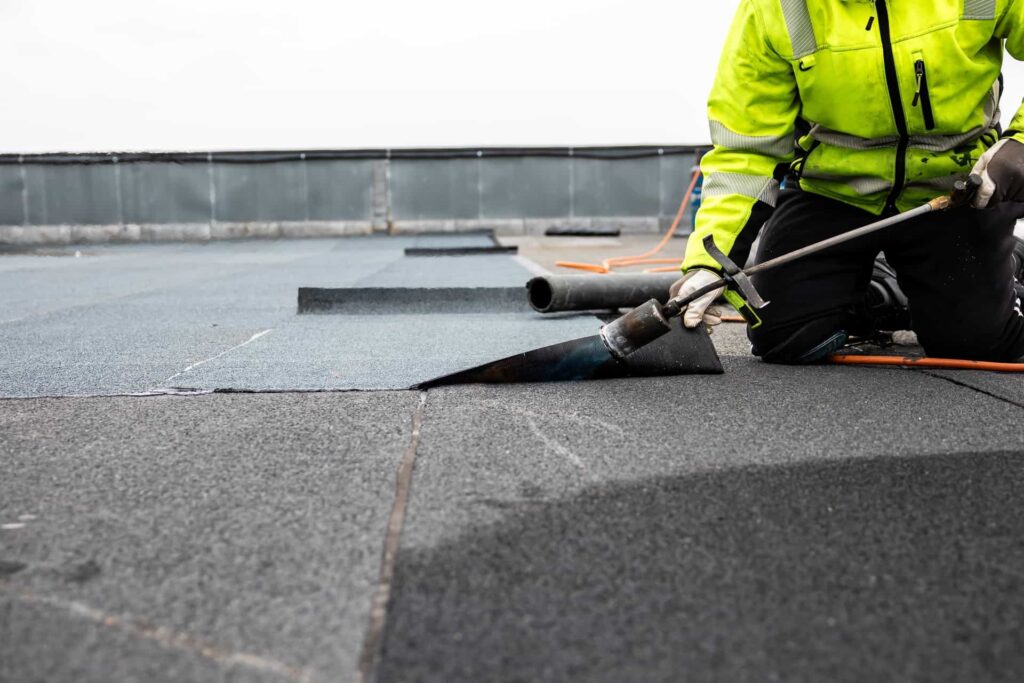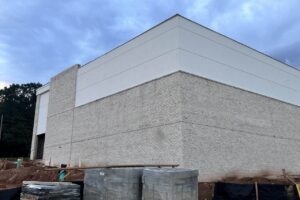Choosing the right roofing material is one of the most important decisions you’ll make when it comes to maintaining your home. A well-chosen roof not only protects your home from the elements but also ensures long-term durability and minimizes future repair costs. One option that’s often considered is roll roofing. But is it the best fit for your home? In this guide, we’ll explain what roll roofing is, its advantages, disadvantages, and help you decide if it’s right for your roofing project.
What Is Roll Roofing?
Roll roofing is a flexible, waterproof material that typically comes in long sheets or rolls. It’s usually made from an asphalt or polymer base, with a layer of mineral granules for added protection against UV damage and the elements. The material is laid down in strips, either flat or overlapping, depending on the type you choose.
Although it’s sometimes referred to as tar paper or felt paper, roll roofing is more commonly used for smaller buildings, such as garages, sheds, or low-slope roofs. It’s generally not used for main residential roofs, but it can be an effective choice in the right situations.
Common Uses for Roll Roofing
Roll roofing works well for:
-
Garages
-
Sheds
-
Workshops
-
Low-pitched or flat roofs
Because roll roofing comes in large sheets, it’s particularly suitable for structures that don’t require heavy support. It’s also ideal for low-slope roofs, as it doesn’t manage rapid water runoff as effectively as shingles or tiles.
Pros of Roll Roofing
1. Budget-Friendly Option
One of the primary advantages of roll roofing is its affordability. Compared to more expensive materials like asphalt shingles, metal, or tile, roll roofing is a more cost-effective choice. This makes it a great option for those with a tight budget or who need a temporary roofing solution.
2. Simple and Quick Installation
Installing roll roofing is relatively straightforward. It comes in large rolls, which means fewer pieces to handle compared to traditional shingles. If you’re a DIY enthusiast with basic skills, you can even install roll roofing yourself, saving on labor costs.
3. Lightweight and Easy to Handle
Roll roofing is much lighter than many other roofing materials, so it places less strain on your roof structure. This makes it a great option for older homes or buildings with weaker roof decks. Plus, its flexibility means it can easily conform to smaller or irregularly shaped roofs.
4. Waterproof and Mold-Resistant
Roll roofing is designed to protect your home from rain and moisture. It also resists mold and mildew, which helps prevent common roofing issues that can lead to costly repairs down the road.
5. Performs Well in Cold Weather
In colder climates, roll roofing can be a good option as it remains flexible even in freezing temperatures. This reduces the risk of cracking and ensures your roof stays intact during extreme temperature fluctuations.
6. Customizable for Different Roof Shapes
Roll roofing can be easily cut and shaped to fit a variety of roof designs, including hips, ridges, and eaves. This adaptability makes it a solid choice for unique or smaller roofs.
Cons of Roll Roofing
1. Shorter Lifespan
One of the major drawbacks of roll roofing is its relatively short lifespan. On average, roll roofing lasts between 5 and 8 years in mild climates, which is shorter than more durable materials like asphalt shingles or metal roofing. If you live in an area with harsh weather, you may need to replace it sooner.
2. Basic Aesthetic
Roll roofing doesn’t have the visual appeal of other roofing materials. It typically comes in plain black or white, which can detract from the overall look of your home. Additionally, some homeowner associations (HOAs) may even restrict the use of roll roofing due to its basic appearance.
3. Not Ideal for Steep Roofs
Roll roofing is best suited for low-slope or flat roofs. For steeply pitched roofs, it’s not the right material. The lack of rapid water runoff can result in water pooling, which can cause leaks and reduce the material’s effectiveness.
4. Vulnerable to Weather Damage
While roll roofing is waterproof, it’s still susceptible to damage from extreme weather, such as high winds, hail, and temperature swings. Over time, exposure to these elements can cause the material to crack, tear, or loosen, which compromises its performance.
5. Requires Regular Maintenance
To ensure the longevity of roll roofing, regular maintenance is a must. This includes checking for tears, resealing edges, and clearing debris. Without proper upkeep, the roofing material can deteriorate more quickly and require more frequent repairs or replacement.
Is Roll Roofing Right for Your Home?
Roll roofing is an excellent choice in certain situations. It offers affordability, easy installation, and works well for low-pitched roofs or smaller buildings. However, you should be aware of its short lifespan and lack of curb appeal before making a decision. If you’re looking for something more durable or visually appealing, other options like asphalt shingles or metal roofing may be a better fit.
If you have a budget-conscious project or a temporary roofing need, roll roofing could be the perfect solution. But if you have a steeper roof or need a roofing material that will last for decades, you might want to explore other options.
Why a Professional Roof Inspection Is Important
Before deciding on roll roofing or any other material, it’s always a good idea to consult a professional. A certified roofing inspector can assess your roof’s condition, slope, and structure to recommend the best material for your specific situation.
A professional inspection ensures that your roof is in good shape and helps you choose the best roofing solution for your home’s needs, preventing potential issues down the road.
Get Expert Roofing Advice Today!
Still unsure whether roll roofing is right for your home? Contact the team at Guardian Angel Inspections. We specialize in thorough roof inspections, offering clear and detailed reports to help you make an informed decision.
Reach out today at 561-512-7854 or fill out our contact form to schedule your consultation. We’re here to help you protect your home with confidence!
Final Thoughts
Roll roofing can be an effective, affordable solution for certain projects, especially when working with smaller structures or low-pitched roofs. While it may not have the durability or aesthetic appeal of other materials, it offers great value for budget-conscious homeowners or those in need of a temporary roof. Be sure to weigh the pros and cons carefully, and don’t hesitate to consult with a professional to ensure you choose the best roofing material for your needs.
- What Is Roll Roofing? (Pros & Cons) - Guardian Angel
- Roll roofing is a type of flexible, waterproof roofing material that comes in long sheets or rolls. It’s typically made from a polymer or asphalt base coated with mineral granules to protect it from the elements.
- roll roofing
Related posts:
No related posts.





